Growing up in the Northwest corner of PA, I am no stranger to sugaring. Sap lines zig zagged through the vast woods, while sugar shacks dotted the countryside. From an onlooker’s perspective, it was intimidating. It seemed like an incredible amount of work that required an enormous set up. Basically, it looked like it had to be your full time job throughout the season. I like maple syrup, but I don’t need gallons upon gallons, nor can I commit to a large operation. So when the Vermont Evaporator Company reached out to me regarding a potential partnership, my knee jerk reaction was “no way! I can’t set up an operation like that”. Well, it turns out that I had it all wrong. Sure, there are operations like I previously mentioned, but it doesn’t have to be that elaborate or expensive. Food grade buckets can replace elaborate sap lines, and in leu of a permanent sugar shack, small evaporators can be set up anywhere. I was intrigued by the simpler, small scale way, and as a homesteader it seemed right up my alley.
Preparing for Sugaring
In its most basic form, making maple syrup is an extremely simple process. It can be scaled up or down for as big or small of an operation as you want. But, the basics remain the same whether you tap five or five hundred trees. You drill into maple trees, hammer in the taps, and connect them to a collection container of choice. Then, once the sap begins to flow from the trees, you collect it, stockpile it in some kind of holding tank (55 gallon food grade barrel in my case), and then when you have enough, boil it down into delicious maple syrup.
The Trees
On my 220 year old New England farm we have no shortage of large Sugar Maples. I previously read that pastures in New England were typically lined with large sugar maples along the stone walls, and sure enough that is the case here. I’m sure these trees have been tapped plenty of times throughout their long lives, and I am happy to be putting them back to work for that purpose. The sugar maple isn’t the only type of maple tree that can be tapped though! Yes, they are the most highly sought after due to their high sugar content (hence the name) but you can tap any maple tree to make maple syrup.
In preparation for the sugaring season, I went out in the fall when the trees still had their leaves and identified the ones that I wanted to tap the following year. I ended up identifying sixteen large sugar maples all larger than two feet in diameter without really even having to stray far from the house. This gives me the possibility of thirty two potential taps, which is more than enough for my small set up.
The Buckets
Because I didn’t want to set up a sap line system, the alternative is to collect the sap at the source of each tap with a bucket. This can be done one of two ways: either by hanging the bucket from the tap and letting the sap flow through a hole. Or, by attaching a hose to the tap and running a line down to a bucket on the ground. Given the location of my trees and the terrain, I am going with the latter, and allowing the sap to run to my bucket on the ground through a line. I am putting in two taps per tree, with both feeding into the same bucket. Sure, the buckets will fill up quicker and need to be dumped into my holding tank more frequently this way. But, it’s less buckets to manage and haul, and is the best set up for me.
In an effort to be frugal, I resisted the urge to go out and purchase food grade buckets from my local hardware store at $4 apiece. Instead, I contacted my local grocery store’s bakery department and instead of tossing the food grade buckets their glazes and frostings come in, they set them aside for me.
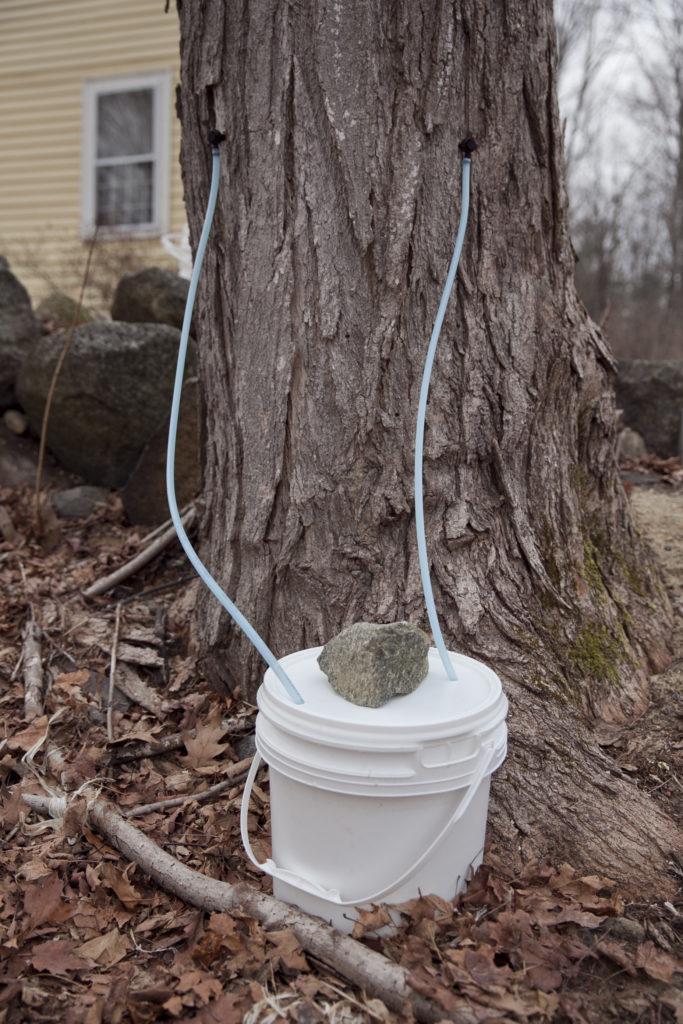
The Taps
There are a lot of options out there for taps and it took me some time to narrow down what I wanted to use. There are various materials such as cast iron, metal, and plastic to choose from that come in 5/16″ and 7/16″ sizes. With the industry standard steering towards the 5/16″ size, I ended up going with these plastic taps as this is what my local co-op carried along with the 5/16″ ID sap line.
The sap runs when daytime temperatures are above freezing, and nighttime temperatures are below. Depending on where you are at in the country, the time of your season will vary. Here in northern Massachusetts, the sap can start running anywhere from the middle of February to beginning of March. It is important to tap your trees sooner rather than later so that you don’t miss your window of opportunity if your season ends up starting sooner.
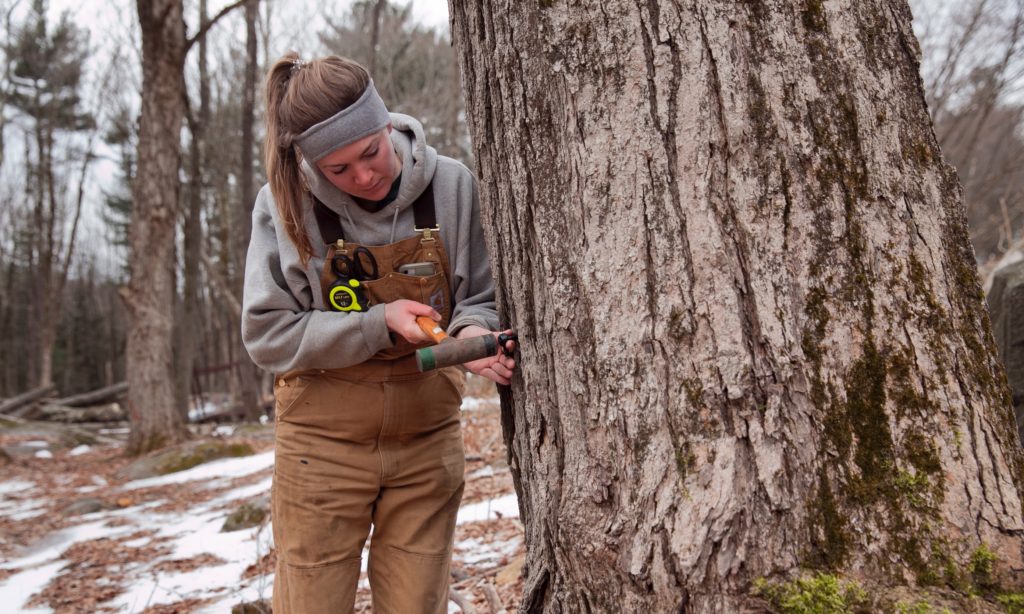
The Evaporator
After stock piling the sap from the trees, it’s time to make some syrup! This is when your evaporator will come in handy, and no, you don’t need a dedicated sugar shack! I am using the Vermont Evaporator Company’s Sapling unit to turn my sap into delicious syrup. It is a portable unit and is ideal for someone such as myself who has a smaller operation. I pull it out when I need it, and tuck it away in the garage when i’m done. No dedicated infrastructure or extremely expensive equipment needed.
Just because I don’t want to dedicate an entire structure to boiling sap, doesn’t mean that I don’t want to do it as efficiently as possible. As any homesteader knows, there are never enough hours in the day so I am always trying maximize my time and be as efficient as possible. The sapling has many design features and benefits that make it a worthwhile investment for someone with anywhere between 5-50 taps. Accessories allow it to be converted into a wood fired grill and smoker for year round use, making it an even more valuable investment.
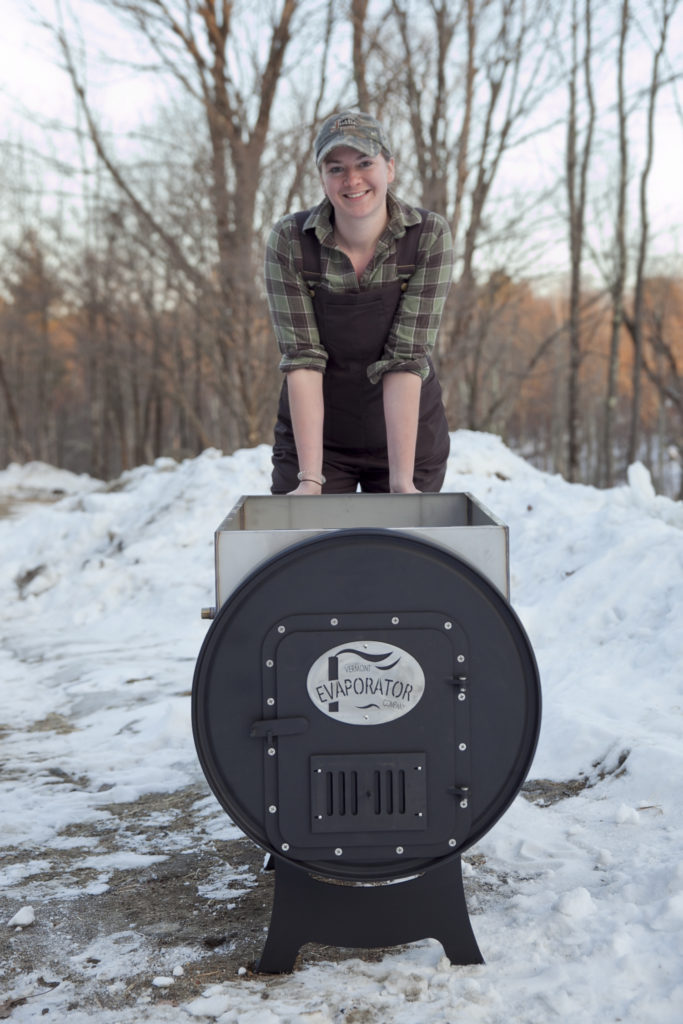
So How Much Syrup Will I Get?
So, after it’s all been said and done, how much maple syrup can you expect to get? There is a general ratio of 40: 1 of sap to syrup. Yes, this means that it takes 40 gallons of sap in order to make 1 gallon of maple syrup. If you’re having a hard time visualizing that kind of volume, that’s 8 five gallon buckets of sap, to give you 1 gallon of syrup. What?! Yes, that is a crazy ratio. But it still doesn’t really help you plan how many taps you need depending how much syrup you want to end up with does it?
There are many influencing factors that affect the sugaring season: the type of maple tree you’re tapping, when you tapped, the condition of the tree, and more importantly the weather. The rule of thumb professionals follow is at the end of the season after all of the sap has been boiled, you can anticipate each tap to yield about a half gallon of syrup. As a homesteader aka non professional, tack on an extra tap or two for good measure to compensate. This is a good rough estimate to use when figuring out how many taps you need, based on how much maple syrup you would like to finish with.
Because this is my first year sugaring and I don’t want to overwhelm myself, I am capping myself at twelve taps. Assuming that it’s a good year and I didn’t screw up too badly, I can anticipate to end the season with approximately 6 gallons of syrup at best. This is more than enough for us, and will give me plenty to enjoy over pancakes, use as a natural sweetener to cook with, and share with friends.
I am really excited about this new skill I’m learning thanks to The Vermont Evaporator Company, and to be putting a new homesteading feather in my cap. Making maple syrup is not nearly as complicated as I thought, or as scary! There are gallons upon gallons of syrup just waiting to be made in those trees, all you have to do is tap their potential!
Are you intimidated by making maple syrup like I was? See how my first season is faring boiling sap into syrup and let’s hear your thoughts below!
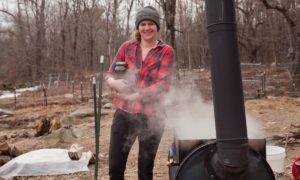
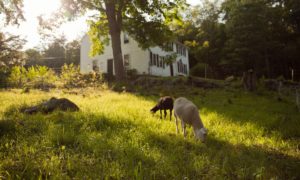
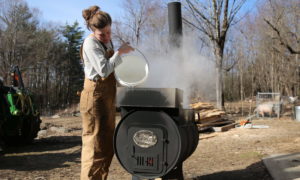
Well holy moly…you guys must have a longer season than we do to get that much syrup per tap. We do 80 taps and our best season gave us 12 gallons. That was about a 6 week season before the sap turned foggy and the trees were starting to bud (aka no more syrup making cuz it tastes terrible after that). But I guesss that’s because winter holds on so long and spring suddenly arrives. I know vacuum taps get a higher yield, but I’ve always heard you should only expect 1 quart per tap, of course every tree is different as well as every season. But anyways, curious to see how your first season goes! It’s a lot of fun and work! Enjoy.
Pingback: Boiling Sap for Maple Syrup! | The Modern Day Settler
Pingback: Guanciale (and bacon) Cured the Ole' Fashioned Way | The Modern Day Settler
Pingback: Grilled Sticky Maple Glazed Chicken Legs on the Vermont Evaporator Sapling – The Modern Day Settler
Pingback: Making Maple Syrup More Efficiently - The Modern Day Settler